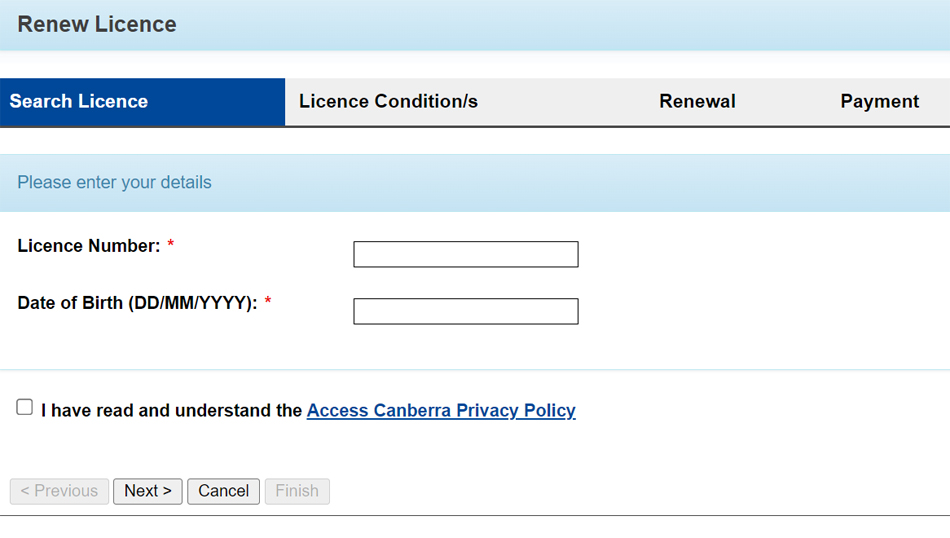Having a driving license provides you with the independence and flexibility to travel anywhere you want. For starters, you do not have to rely on public transportation. However, driving licenses do not last an eternity and will have a fixed expiration date, after which you are bound to renew. Renewing your driving license is a legal process that you have to follow because driving with an expired license is a traffic offense and can lead to fines and/or suspensions. Additionally, your driving license can also act as a form of identification, as it is a widely accepted personal document.
In Australia, driving license renewals are handled by specific state and territory governments, which means that there is no universal system for applying. For instance, if you are living in Western Australia, then you need to choose the Department of Transport (DoT) for your renewal. Similarly, residents living in New South Wales need to contact Transport for NSW for renewals. So, if you are looking to renew your driving license in Australia and want to know the steps that need to be followed for the process, then you can do so by going through our guide in its entirety.
Steps to Follow For Renewal
As previously noted, the department for driving license renewals for each Australian state and territory differs. Thus, the validity of the driving license provided by each territorial or state government will differ. For instance, licenses provided by the Department of Transport and Main Roads (Queensland), the Department of State Growth (Tasmania), and the Department of Transport (Western Australia) carry a maximum validity of 5 years.
On the other hand, licenses provided by Access Canberra (Australian Capital Territory), Transport for NSW (New South Wales), the Department of Infrastructure, Planning, and Logistics (Northern Territory), the Department for Infrastructure and Transport (South Australia), and VicRoads (Victoria) carry a maximum validity of 10 years. To start the renewal process right away, follow the steps outlined below.

- Start the process by first heading over to the official website of your concerned state or territorial government: Canberra, New South Wales, Northern Territory, Queensland, South Australia, Tasmania, Victoria, or Western Australia.
- On the landing pages for each of the aforementioned websites, head over specifically to the driving and transport section.
- From there, select the topic for the driver license and choose the option for renewal.
- It should be known that most Australian states and territories support online submission of driving license renewal requests by simply entering your license number, choosing the renewal term, and paying the requisite fees.
- Alternatively, other territories or states (such as New South Wales) require you to visit a physical service center or office to complete the renewal process.
Please note that once you successfully renew your driving license, you will be able to continue using it for the relevant validity period.
Everything You Need to Know

Since Australia does not have a national identity card, the country primarily depends on driving licenses as a means of photo identification for citizens. And while the application process for driving license renewals might not be uniform in Australia, you can still expect the system followed to be universal.
Currently, there are eight different classes of licenses provided by all Australian state and territorial governments, and they are listed as follows: car license, rider license, restricted rider license, light rigid license, medium rigid license, heavy rigid license, heavy combination license, and multi-combination license.
The typical car license usually covers vehicles up to 4.5 tons of GMV (gross vehicle mass) and that seat up to 12 adults (including the driver). For the uninitiated, GMV is the maximum weight allowed for the vehicle once it is loaded. And then there is the rider license, which applies to all motorcycle riders in the country. The rest of the license classes are primarily reserved for the commercial sector.
Keep in mind that the medical standards for drivers of commercial vehicles are primarily set by Austroads and the National Transport Commission. And drivers carrying paying passengers must obtain a license based on the size of the vehicle along with an authority certificate or license issued by the Ministry of Transport (Australia). Additionally, it should be known that some states or territories provide driving licenses that are only geared towards a particular transmission. For instance, a driver obtaining a license for a vehicle with manual transmission will not be able to drive a vehicle with automatic transmission.
Apart from the above-mentioned details, some Australian territories, such as New South Wales, South Australia, and Queensland, offer digital driver licenses as well. And visitors to Australia with a temporary visa are also allowed to obtain overseas driving licenses, with the exception of Victoria and the Northern Territory of Australia. Also, when it comes to cancellation or suspension of a driving license, all states (except New South Wales) have implemented a 12-point infraction system over a three-year period. Once you accumulate the stated points, you will be disqualified from driving. However, in New South Wales, the infraction system is up to 13 points.
The minimum suspension period is three months (up to a maximum of five months), which will be increased by one month for every four infraction points over the listed limit. Instead of accepting the suspension, drivers can also opt for a “good behavior” protocol over the next 12 months, and if further infraction points accumulate within the “good behavior” period, then the suspension period will be double that of the original.

